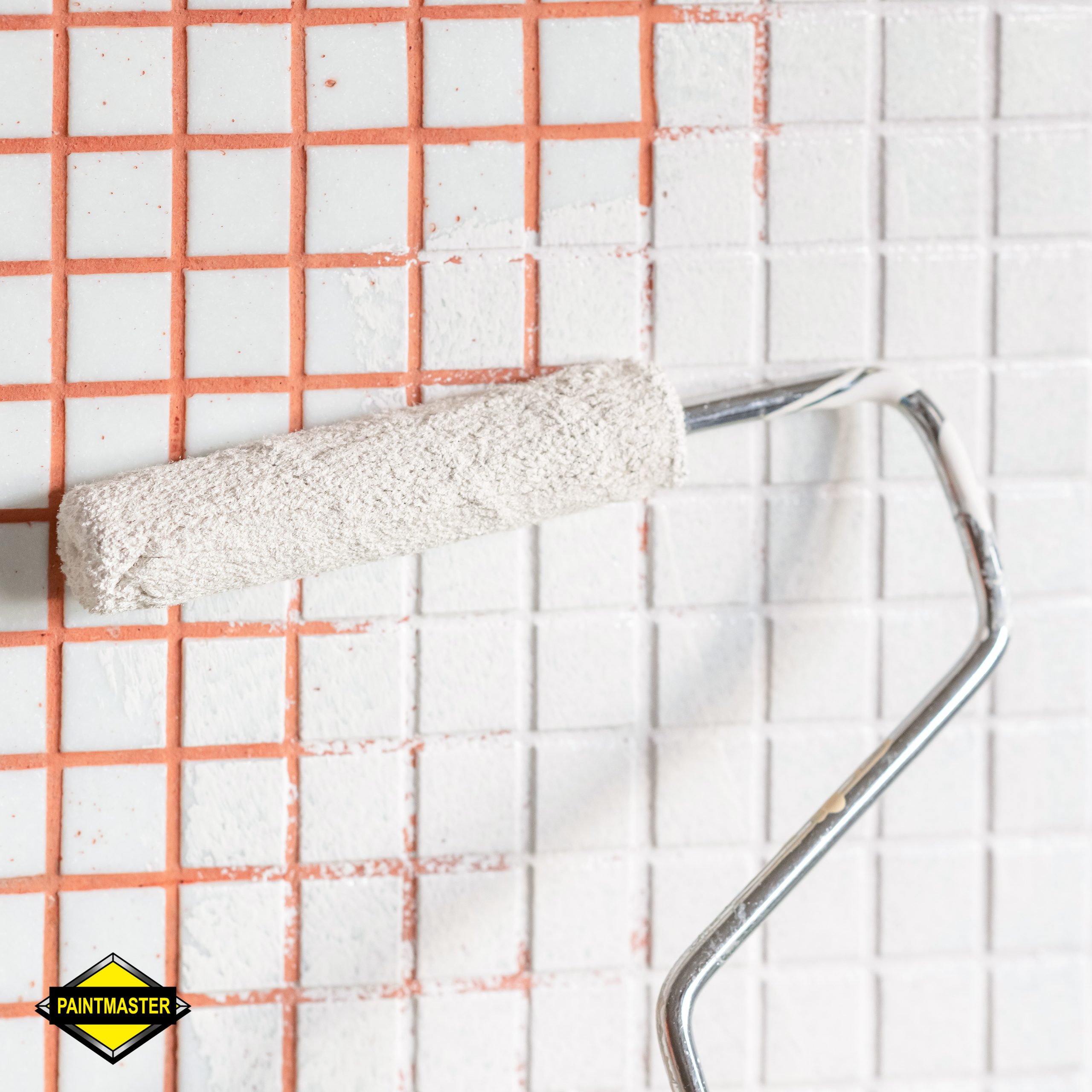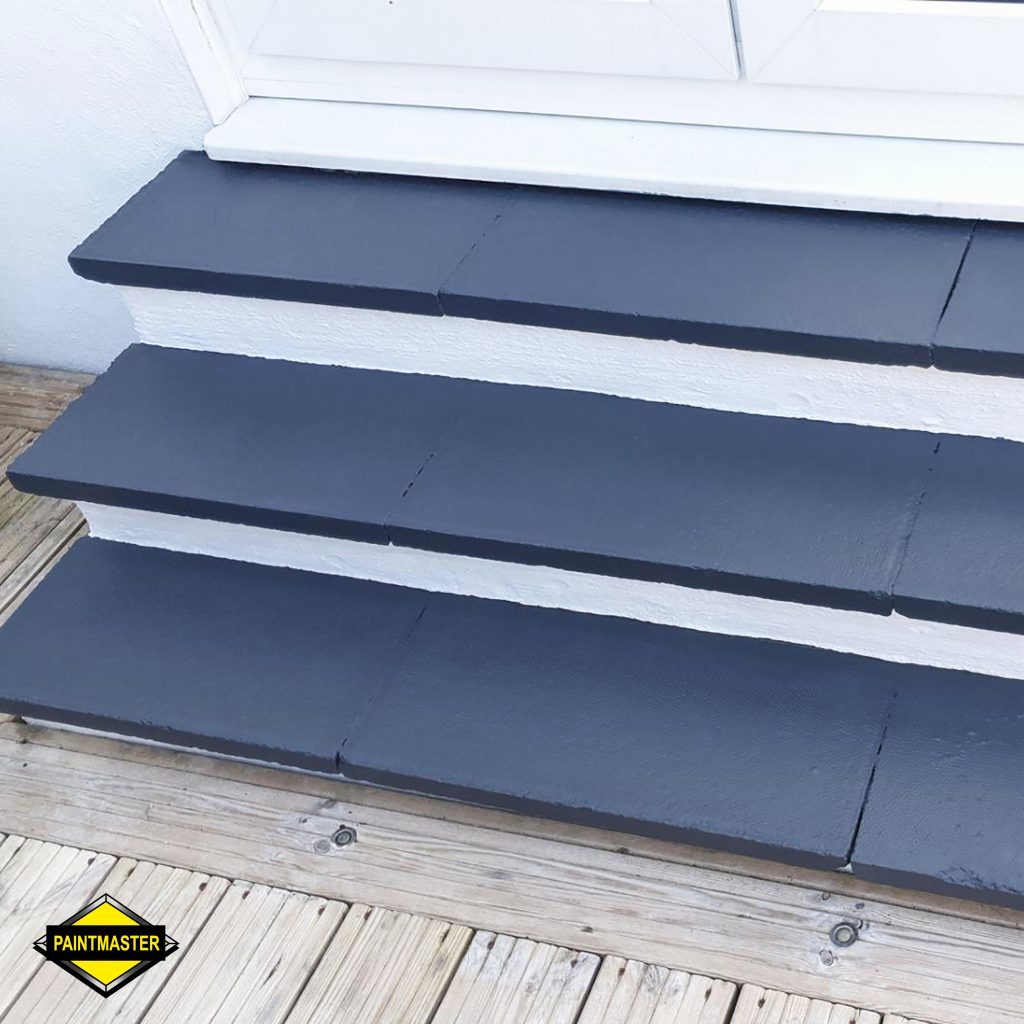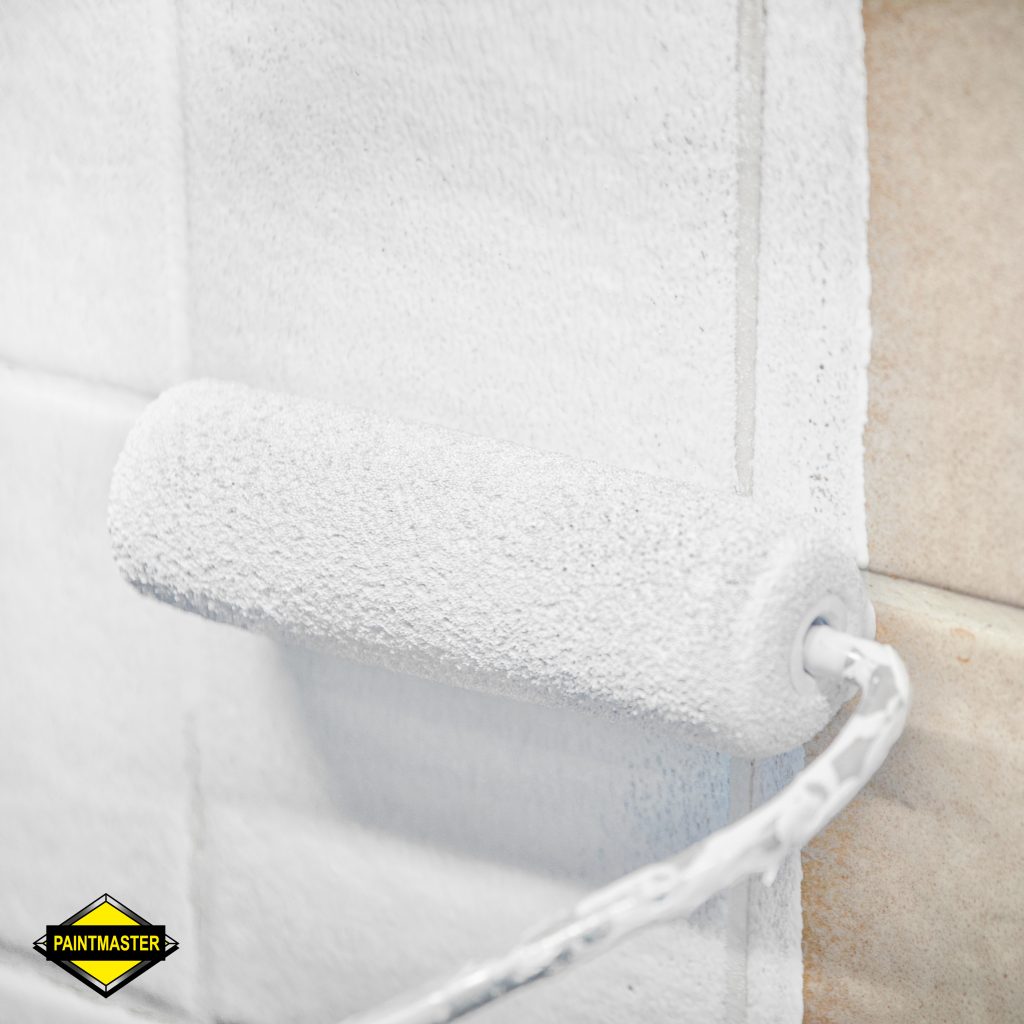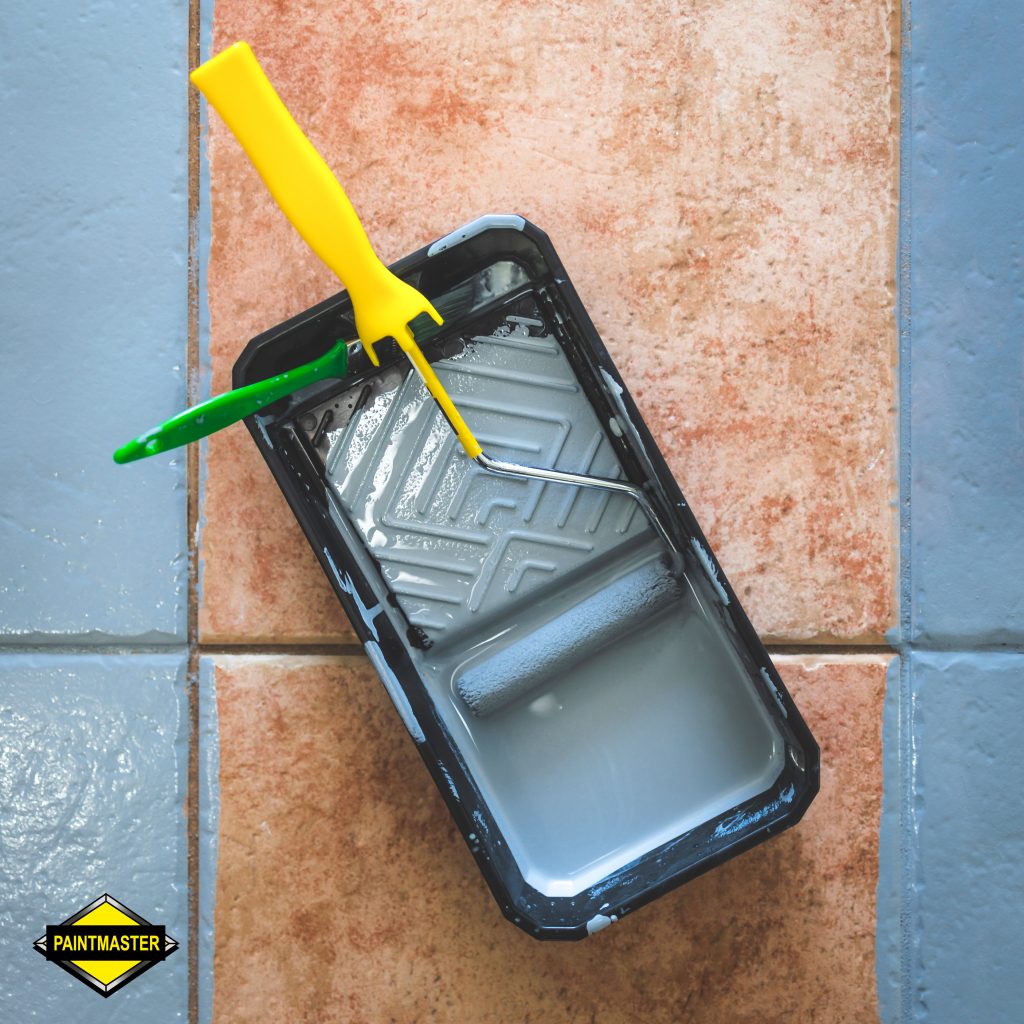
This How to Paint Tiles Guide is a guide on painting tiles and all your tile painting questions answered!
Can you Paint Over Wall Tiles?
Most types of wall tile CAN be painted over, with only glazed quarry tiles that are completely paint resistant. So, if you treat your tiles properly using primer, you can give them a fresh coat of paint that will liven up your bathrooms, kitchens, and other tiled areas.
Ceramic, porcelain, and other tile materials have glossy surfaces that make them stain resistant. You may assume that this would keep paint from sticking, but there is a way around it.
You can also repaint floor tiles too! More on that later.
Is Painting Wall Tiles a Good Idea?
Absolutely! Tiles start to look tired after a few years, especially in kitchens and bathrooms. A fresh coat of paint is a great alternative to fitting brand new tiles, saving you time and money. You will also have access to a range of colours that aren’t common as a base tile colour.
However, you should consider the following before you commit to painting your tiles:
- Most tile painting will cover the grouting between the tiles, altering the look of the wall or floor. However, with some careful painting you can keep the grout showing.
- You need to use a specialist paint and primer when painting tiles. Tile paint can be used on other surfaces too, so not using a full tin is an opportunity for your next project.


How long do Painted Tiles last?
Tile paint is very durable. Even floor tiles with a lot of foot traffic will look bright and fresh for a long time after painting. If you use a muted colour such as grey, you can increase the longevity of your tiles even further as the wear and tear of everyday life will take longer to show up.
Do I need to Prime Wall Tiles before Painting?
Before you put your brand new tile paint on your brush, you first need to prime your tiles. A layer of primer will help your paint stick to the tiles and will help it last longer too!
A quality primer will be quick-drying and should only need a single coat. As soon as that’s done, you’ll be ready to paint.
Floor tiles also need priming so that the tile paint sticks, but the paint you use will be slightly different.
What kind of Paint do you use on Wall Tiles?
Everyday interior emulsion paint is not enough for glossy tiles. Instead use a multi-surface paint that will stick to the primer and last longer. As the name suggests, multi-surface paints are also ideal for metal and other glossy surfaces, so purchasing a large tin for your tiles can help with other future projects too!
Paintmaster Top Tip:
If you’re looking for the most durable paint, search for trade paints instead of ‘retail’ or ‘domestic’. That way you can get a better product that will last longer.
Like interior emulsion paint, tile paint is a flexible product that has different levels of sheen.
- Matt – Minimal sheen, creates a flat look ideal for bold colours.
- Satin – A shiny finish that will make your tiles stand out in well-lit rooms.
- Gloss – A traditional shine that will make the tiles look brand new and not painted.
How do you Paint Floor Tiles?
The best paint for floor tiles is different than their wall equivalents due to the amount of foot traffic. Being walked on all day every day will wear away paint and primer fast. But by using floor paint you can maximise the time between repaints.
As with wall tiles, you still need to prime the tiles before painting. A water-based primer is ideal for smooth tiles and will bond well without damaging your floor. As with wall tile primer, this helps the paint stick to the tiles and gives you an even finish.
The paint you choose can be a wide variety of colours, from muted greys to bold blues. Whatever your style, there is a tile paint to match it.
Once you’ve chosen your paint and primer, it’s time to get painting.

Tile Painting Guide – Step by Step
Paintmaster recommends that even experienced painters should read our guides for hints and tips that you may not have known before. Our guides make the process easier and the results better.
Step 1 – Prep
Painting tiles isn’t like regular interior painting so preparing well is more important than ever.
Before you start, here is a list of everything you’ll need in the order you will use them:
- Cleaner & Degreaser
- A Clean Cloth
- Masking Tape
- Sandpaper (120-grit)
- Tile Paint
- Primer
- Paint Brush
- A Mini-Roller
Step 2 – Cleaning
Once you have everything, it’s time to clean your tiles as well as possible. Any dust and grime will prevent the primer from working and your paint from sticking. We recommend using a universal cleaner & degreaser. Clean off the residue with your cloth, paying close attention to the edges and grout between the tiles. Make sure the tiles are 100% clean and dry before you move on.
For painting wall tiles, you can sand the tiles down with your sandpaper. This creates a rougher surface for the paint to stick to. Once they’re sanded, simply clean with water and a cloth to remove the dust.
Now the tiles are clean, check them carefully for any cracks or dents. If you find any, you may want to consider fixing them before you paint to make sure they don’t ruin the final finish.
Finally, mask the area around the tiles with masking tape to get the sharpest lines. If you want to leave the grout unpainted, mask the gaps between tiles with thin strips of tape. This is a fiddly job, so take your time to make it as neat as possible.
Step 3 – Priming
Next step, prime your tiles. Primer is very thin, but only needs a single coat to work. Apply evenly with your paint brush and paint roller, brush for the edges, roller for the flat areas.
Primer takes 1-2 hours to dry. In the meantime, clean your brushes and roller well so they are ready to paint with.
Step 4 – Painting
Now for the fun part!
As with the primer, you’ll be using the brush for the edges first. Your first coat of paint should be thinner than the second to create a solid base for your topcoat. Using too much paint on the undercoat can ruin your finish, so wipe off the excess paint before every stroke.
Once the edges are done, switch to the paint roller. When rolling, again with a thin coat to start with, overlap the painted edges to blend it all together and remove the brush marks.
Leave the first coat to dry, and then apply the thicker topcoat.
Step 5 – Admire your Tiles
When the paint is dry, remove your masking tape and step back to see your freshly painted tiles.
How do they look? If you followed our guide carefully you should have a clean, even finish and the tiles will look brand new.
If you covered your grouting, but don’t like the contrast, you can always paint the grout with a complimentary colour that will make the tiles stand out even more.
More Advice & Information
If you’d like to know more about any of our products or want to learn more about exterior or interior painting, please check out our blog for more. You can also contact us with any questions you may have.
We look forward to hearing from you!
FAQ's
Can you paint over tile and grout?
You can easily paint over tiles with the right tile paint. Many people choose to paint their grout separately and cover it with strips of masking tape while they paint each tile. It’s a fiddly job, but the results are worth it.
Do you need to prime tiles before painting?
Without a layer of primer, even the best tile paint won’t stick to your tiles. Primer creates a smooth surface for your paint to cling to, as well as making the colour bolder and extending the lifespan of your tiles.
Do you need to sand tiles before painting?
If you paint directly onto glossy tiles, your tile paint won’t stick, even with a primer. By sanding the tiles down first you create an even surface for primer to stick to, as well as removing any old paint that is peeling.
Does tile painting last?
The short answer is that yes painting floor tiles does last
How long does tile paint last?
If paired with a quality primer, tile paint should look good for between 1–2 years. This is because of the excess moisture in the air around them. By keeping them clean, you can maximise how long the paint lasts.
Is it worth painting floor tiles?
Absolutely, yes! If you’re not quite ready to commit to the costs of replacing tiles, you can paint them instead. Floors tiles do take a lot of wear and tear for obvious reasons, so while it may not be a long-term solution, it is a low-cost and easy approach to covering up old floor tiles in the interim.
Is painting tiles a good idea?
Yes! Ripping out and replacing tiles is expensive and time consuming. With quality tile paint you can make your tiles look better than new and help them to last for a long time.
Which paint is best for tiles?
Multi-surface or epoxy resin paints are best for bathroom and kitchen tiles. Unlike regular paint, they repel moisture and are washable, with excellent longevity even in damp conditions.
